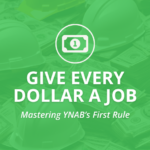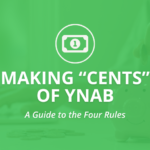Embrace Your True Expenses: Mastering YNAB’s Second Rule
- By Brett Schaffner
- In Budgeting

Budgeting isn’t just about scraping through the month; it’s about paving a smooth financial path into the future. YNAB’s second rule, “Embrace Your True Expenses,” reimagines the day-to-day rigor of Rule 1 by projecting it into the future. If Rule 1 is the microscope focusing on the present, Rule 2 is the telescope that helps us navigate the financial cosmos of the coming months and years.
The Philosophy Behind True Expenses
True expenses represent more than just bills that come due; they are the cornerstone of breaking the paycheck-to-paycheck cycle and preventing future debt. By planning for expenses that are not monthly but are inevitable—like holiday gifts, car repairs, or that bi-annual insurance premium—you transform potential financial surprises into expected events.
How to Implement This Rule
- Identify and Forecast: Start by identifying all the non-monthly expenses you can anticipate over the year or even further out. This might include things like property taxes, a cruise, biannual vehicle servicing, a new roof, or your kid’s braces.
- Break It Down: Once you have a list, break these costs down into manageable monthly savings goals. For instance, if your car insurance is a twice-a-year $600 payment, setting aside $100 each month means you’re ready without a scramble.
- Allocate Funds in YNAB: Use YNAB to create categories with targets for each of these true expenses. This systematizes your approach, turning large, irregular payments into small, manageable parts of your monthly budget so you’re always prepared.
Why It Matters
Focusing on true expenses helps you avoid the financial whiplash that can occur when ‘surprise’ expenses pop up. Instead of being hit with a massive car repair bill you hadn’t planned for, you find peace knowing the money has been accruing silently, waiting for its time to shine. It’s not just about being reactive; it’s about being strategically proactive.
TRY YNAB FREE FOR 34-DAYS
Progress Not Perfection
As you embrace true expenses, remember that perfection isn’t the goal—progress is. In an ideal world, each true expense would be fully funded by the time its bill comes due. However, in reality, you might find yourself with only part of the amount saved. Don’t let this discourage you. Having some of the money set aside is infinitely better than none. For instance, if an unexpected car repair costs $2000 and you’ve managed to save $1800, you only need to come up with $200 more. This is a far less daunting task than finding the full amount last-minute and is actually a huge win.
Connecting Present to Future
While Rule 1 of YNAB helps you assign every dollar a job for more immediate needs, Rule 2 extends this assignment into the future. This forward-thinking strategy ensures that when future bills become present realities, they don’t derail your financial train but merely confirm the route you planned all along.
Wrapping Up
“Expect the Unexpected” is more than just a catchy phrase; it’s a fundamental principle of savvy budgeting. By embracing YNAB’s second rule, you’re not just surviving financially; you’re thriving, equipped for whatever lies ahead. Remember, a well-planned budget isn’t restrictive; it’s liberating!
Need Help Planning Your True Expenses?
I'm here to help you set up and optimize your YNAB budget to master both the present and the future expenses with confidence. Reach out today, and let’s build a budget that anticipates every twist and turn on your financial journey.
- Share:
You may also like

Age Your Money: Mastering YNAB’s Fourth Rule
- September 28, 2024
- by Brett Schaffner
- in Budgeting

Roll With The Punches: Mastering YNAB’s Third Rule

Give Every Dollar a Job: Mastering YNAB’s First Rule


